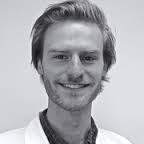First Human Embryos Genetically Modified Using CRISPR-Cas9 DNA-editing Technique

Developmental biologists of the Karolinska Institute in Stockholm, Sweden have joined only a handful of others in a quest to genetically edit human embryos using CRISPR/Cas-9 technology. The controversial endeavor has underlined ethics talks on modification of human embryonic DNA, also known as ‘germline modification’. The Swedish group has pushed the boundaries by using viable embryos that could be used to create life1.
Previous reports on human embryo editing originate from two groups in Guangzhou China. In 2015, Junjiu Huang and others of Sun Yatsen University reported on modification of the HBB gene, which results in the potentially fatal blood disorder, β-thalassaemia, when mutated2. In April of 2016, Yong Fan of Guangzhou Medical University published the second-ever report using CRISPR-editing of human embryos – this time attempting to provide immunity to HIV infection3. By inducing the CCR5Δ32 mutation, which provides natural resistance to HIV infection, the scientists aim to artificially create the same effect. In these two Chinese reports the scientists stress that the embryos used were not viable, i.e. could not be used for implantation.
Dr. Fredrik Lanner, the lead scientist at the Karolinska Institute, however, is the first to openly state that his group is performing experiments on viable human embryos. Although the researchers note that they never let embryos make it past 14 days of development, the public step has re-raised concerns.
Germline editing has tremendous potential for human health. Being able to genetically cut out any inheritable diseases would save many carriers a lifetime of suffering. Moreover, CRISPR editing of embryos would theoretically allow us to increase our defenses against nearly any disease, as long as we understand the genetics behind it.
Unfortunately the flipside is equally powerful. Editing human germ cells means that genetic changes are passed on to future offspring with unknown, potentially hazardous effects for future generations. Moreover, mistakes in gene editing could introduce new diseases into our gene pool. And finally, the technology enables handpicking of genetic alterations and brings us dangerously close to a designer baby era. Dr. Lanner told National Public Radio (NPR) ”It’s not a technology that should be taken lightly. So I really, of course, stand against any sort of thoughts that one should use this to design designer babies or enhance for aesthetic purposes.”
In most countries it is illegal to modify a human embryo that is going to become a person. A 2015 global summit in Washington DC brought together experts from around the world to establish consensus on gene editing as we move forward4. While the tendency is to allow basic science experimentation, development of genetically-modified humans remains prohibited. Currently, approval for gene editing of human embryos has been given in China, Sweden and the United Kingdom.
Dr. Lanner also hopes his research will shed new light on embryonic stem cells, which have been long recognized as high-potential cells with uses in the tissue engineering of any human organ or tissue.
Resources:
1) http://www.nature.com/news/gene-editing-research-in-human-embryos-gains-momentum-1.19767
2) Liang, P., Xu, Y., Zhang, X. et al. Protein Cell (2015) 6: 363. doi:10.1007/s13238-015-0153-5
3) Kang, X., He, W., Huang, Y. et al. J Assist Reprod Genet (2016) 33: 581. doi:10.1007/s10815-016-0710-8
4) http://www.nationalacademies.org/gene-editing/Gene-Edit-Summit/index.htm


